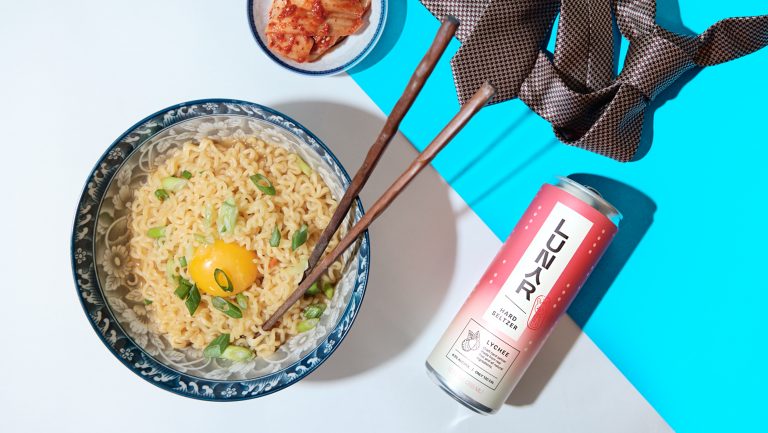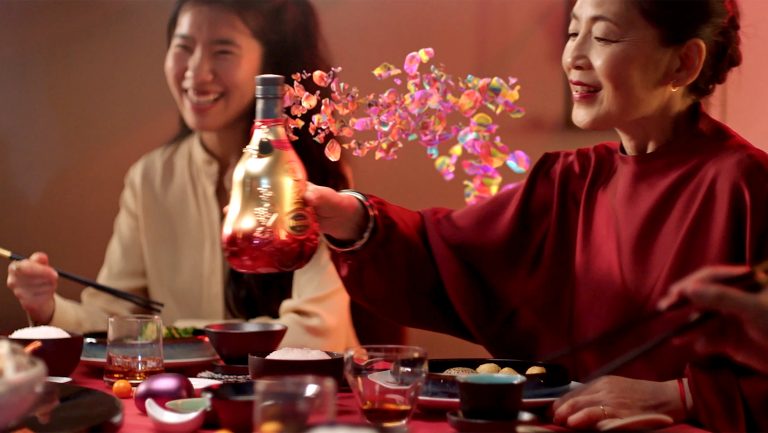Asian Americans and Pacific Islanders represent the fastest growing demographic in the U.S.: 23.1 million people in 2019, up 46 percent from the previous decade, according to Nielsen.
But despite the ascent of this influential market segment, all of the AAPI professionals we interviewed in this story recount being the only—or one of a handful of—AAPI drinks professionals in the room.
There are reasons aplenty—both intrinsic and extrinsic.

Don’t miss the latest drinks industry news and insights. Sign up for our award-winning newsletters and get insider intel, resources, and trends delivered to your inbox every week.
The Dynamics Behind AAPI Underrepresentation
Historically, new immigrant parents, overly exposed to unforgiving work hours, want their children to pursue a stable, low-risk profession that provides health insurance. Further, Asian immigrant parents typically prize the doctor-lawyer profession because it fulfills their high regard for education and marks an achievement of the family’s American Dream. That means bartender, bar owner, sommelier, and distributorship careers are usually out of the question. And for their children, sentiments of gratitude, guilt, obligation, and sacrifice are so ingrained that it’s difficult for many to disappoint their parents.
Additionally, much of wine culture—the cultivation, consumption, and custom of food pairings—is rooted in white America and Europe, which makes it less accessible to individuals raised in Asian households.
“For me, learning about wine was difficult because I didn’t grow up with berries [the most common fruit descriptor for wine],” says Philippines native Paula De Pano, the beverage and service director at Fearrington Village in Pittsboro, North Carolina. “I don’t have a reference point for raspberries, for example, but I have a great reference for mangoes—six different types of them.”
The same goes for common tasting notes that evoke brioche or cheese rind. These foods don’t exist in Asian cuisine.
There are behavior-related cultural barriers, too. “I had to learn to speak up,” says Thanh Nam Vo Duy, the vice president of commercial development at Moët Hennessy USA, who was raised to “speak only when spoken to” and “respect your elders.” The Vietnamese immigrant found success by adjusting to a white American culture that rewards outspoken confidence. However, he grappled with a workplace that lacked an AAPI community of colleagues and the role models to lead them.

The AAPI Immigrant Liquor Store Owner
There is, however, one beverage space where AAPIs shine: as liquor store owners.
C.N. Le, the director of the Asian and Asian American Studies Certificate Program at University of Massachusetts, Amherst, attributes the entrepreneurialism of AAPI immigrants to labor market discrimination—not getting hired due to a lack of English fluency, the disregard of degrees and licenses from their native countries, or simple race-based discrimination. Le also points to ethnic resource networks whereby immigrants can rely on their families and co-ethnics for unpaid or cheap labor and set up private lending circles for startup capital.
In the 1980s, white-owned small businesses—convenience stores, laundromats, nail salons, liquor shops—that were located in predominantly minority communities were sold to Asian immigrants in large numbers, explains Le. Within that context, the appeals of running a liquor store include cheap rent, minimal English required, and a stock that doesn’t expire. After operating the business for a number of years, “the owners would then sell them to the next wave of Asian immigrants and the cycle generally repeated itself” exhibiting a pattern of “ethnic succession.”
AAPI presence in the retail tier, however, doesn’t extend into other segments of the beverage industry. In 2020, Asians made up 0.4 percent of total employees among alcoholic beverage wholesalers (versus a white participation rate of 96.9 percent) and 1.9 percent among alcoholic and non-alcoholic beverage manufacturers—showing the lowest rates among all ethnic groups, despite Asia’s long history of producing alcoholic beverages like sake and soju—according to the U.S. Bureau of Labor Statistics. Among the Court of Master Sommeliers Americas, less than 10 percent of the 172 master sommeliers are of Asian descent.

The Cost of Ignoring the AAPI Consumer
The lack of AAPI community members in the beverage alcohol industry translates into an inability to market to this affluent demographic. Asian Americans have tremendous economic power: Nielsen reports that AAPI buying power rose 314 percent between 2000 and 2019, and it’s projected to reach $1.3 trillion in 2022.
According to a 2019 Nielsen study, from 2018 to 2019, Asian American spending on coolers for alcoholic beverages increased 12 percent to $41 per buyer. Over the same time period, per-buyer spend on cordials and proprietary liqueurs went up 6 percent to $68; and brandy and Cognac ratcheted up 32 percent to $71.
But reaching the AAPI consumer is complicated. The Asian American demographic is not a monolith, says Genny Hom-Franzen, the executive director of the Asian American Advertising Federation, which helps companies market to AAPIs. She cites multiple countries of origin with even more languages, various media platforms and apps used, and when it comes to liquor, disparate drinking cultures.

Shared histories between the marketer and consumer matter. For Hennessy’s 2021 Lunar New Year celebration, the Asian employee resource group charged Tammy Cho, the cofounder of the Hate Is A Virus nonprofit, to address recent hate crimes and violence that have been endangering the larger AAPI community. The company, which intentionally uses AAPI-owned marketing agencies like Admerasia and L3 Advertising, is also working with the Asian American Business Development Center to provide funding to AAPI small businesses through its Unfinished Business program, and issued a social media statement condemning the anti-Asian attacks.
Hennessy’s message hit the mark for Sharon Yeung, the star bartender and cofounder of the Daijoubu pop-ups spotlighting Asian-flavored cocktails. “I feel like they were the first ones to acknowledge that [the anti-Asian violence] is an issue, and it spoke volumes,” she says.

New Opportunities for AAPI Professionals
The burgeoning modern Asian dining scene also presents a bright spot for AAPI representation. There are more beverage program directors at Michelin-starred restaurants like Atomix’s Jhonel Faelnar or Cote’s founder and sommelier, Simon Kim, who are pouring fine wines alongside Asian dishes. Asian foods now present an opportunity for wine pairings, which in turn has cultivated more interest in wine from consumers and buyers alike and has necessitated distributorships with salespeople who know Asian food. And then there’s also the opportunity for brand creators to produce beverages that are specifically made for the flavor profile of traditional Asian food.
“Despite a gamut of authentic menu items like garlic soy chicken, tteokbokki, and chikin-mu pickled radish, the drink menu [at a recent restaurant outing] was filled with Bud Lights and Rolling Rocks,” recounted cofounders Sean Ro and Kevin Wong of Asian-flavored craft hard seltzer company, Lunar, in a press kit. “From that day on, all we could notice were restaurants struggling to find the right beverage pairing for traditionally authentic foods.” In October 2020, Ro and Wong launched Lunar—and sold out by January 2021.
“Our generation and the ones after us are diverging from the stereotypical career paths and pushing for more representation and visibility,” says Joanie Kwok, the senior director of the flavored malt beverages division at Anheuser-Busch and leader of several BIPOC initiatives within the company. “I hope that myself and my other Asian colleagues serve as encouragement for others that they do belong. And we’ll uplift them along the way.”
There’s no question that AAPI representation—and the thoughtful, authentic ways to reach AAPI professionals and consumers alike—ushers in new and exciting opportunities across the industry.

Dispatch
Sign up for our award-winning newsletter
Don’t miss the latest drinks industry news and insights—delivered to your inbox every week.







